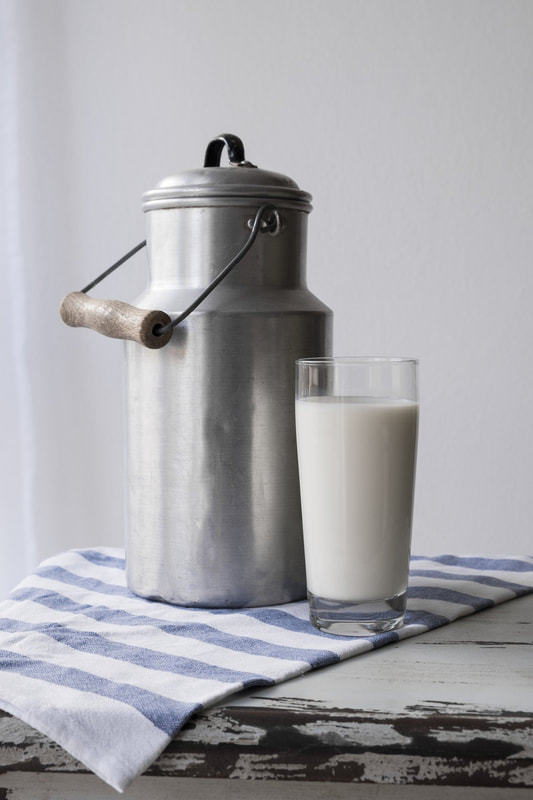|
Spring keeps making tiny appearances, followed by another winter storm here in NE Iowa. Before you know it we'll be busy with fieldwork and cheese curd production, so full steam ahead with all of the winter projects we had planned for 2023. If you follow us on our social media pages, you may have seen a post about our updated walls in the milking parlor. They needed to be replaced after years of cows bumping into them. Not only did they not look good, but they were getting difficult to clean, which made them really not look good. Now the walls are new, shiny and clean!
0 Comments
This time of year things slow down a bit at the farm and creamery. As we patiently wait for spring to truly show up (Mother Nature likes to tease us with a few fake springs around here...) there is plenty to keep us busy.
Coffee with Karen is a daily occurrence on the farm for us. Karen is a 6 year old Jersey cow who came to our farm about 4 years ago and instantly became a favorite. If you follow us on any of our social media account you've definitely seen her. Maybe it's her lovable personality or her crazy quirks, but she's hard not to notice!
Most mornings when she's done milking she hangs out in the parlor before making her way back to the barn for breakfast. Sometimes she wants a few head scratches or she hangs out with her favorite dog, Shelia (they have a special bond). Either way we're happy to spend a few extra minutes with her while we drink our coffee and she chews her cud. Today’s dairy shelves are filled with so many options, sometimes it’s hard to know where to even start. Rather than throw in the towel and grab whatever is closest, read on for some differences between conventional milk and our non-homogenized options.
What are the Differences Between Homogenized and Non-Homogenized Milk? When milk is left in its natural state, a layer of cream floats to the top and settles. It creates a beautiful layer of pure cream. Milk that has been homogenized has gone through a process that forces the milk fat globules to break into smaller pieces, this keeps them suspended throughout the milk and prevents the natural separation from occurring. Why did the Dairy Industry Switch to Homogenized Milk? You might be wondering why the dairy industry would choose to homogenize milk and change it from its perfect natural state. Milk is not homogenized to alter its taste, but it does give it a smoother looking texture and a more uniform product. Even though you notice these changes visually, our customers actually find that our non-homogenized skim milk tastes smoother and richer then homogenized skim milk. Milk is homogenized as a convenience to consumers. Since the milk fat stays uniformly suspended there is no need to shake or redistribute the milk before drinking. But we all know that just because something is a little more convenient does not make it better. Sometimes the more natural a product is, the better it is for us! A little shake and the cream in your milk will re-suspend and you can pour the perfect glass of milk. Benefits of Milk Minimally processed milk preserves its health benefits. There are no studies to show that non-homogenized milk is easier to digest. Anecdotally, our customers tell us that they previously thought they were lactose intolerant, but able to drink our milk with no issues! Milk is one of the most perfect sources of protein. One cup contains 8 grams of complete protein, meaning it contains all of the essential amino acids your body needs. Dairy products provide more calcium, protein, magnesium, potassium, zinc and phosphorus per calorie than any other typical food found in the adult diet! If you’re not a fan of a cold glass of milk, try it in a smoothie, oatmeal or adding it to all the delicious fall soups you’re making this time of year. Milk has been proven to help athletes repair muscle damage. Drinking milk after a tough workout can decrease muscle damage, promote repair, increase strength and even help decrease muscle soreness! It is a great alternative to processed protein drinks that are made for post-workout recovery. Drinking milk also provides the perfect supplement for bone support. Studies have shown that the combination of calcium, phosphorus, K2 and other vitamins in milk help with bone growth and decrease the risk of osteoporosis. https://www.ncbi.nlm.nih.gov/pmc/articles/PMC4703621/ |
WW Homestead Dairy Team
We love cows, curds & ice cream!!! Archives
June 2023
Categories
All
|
Summer Hours
|
Telephone563-568-4950
|
|



 RSS Feed
RSS Feed